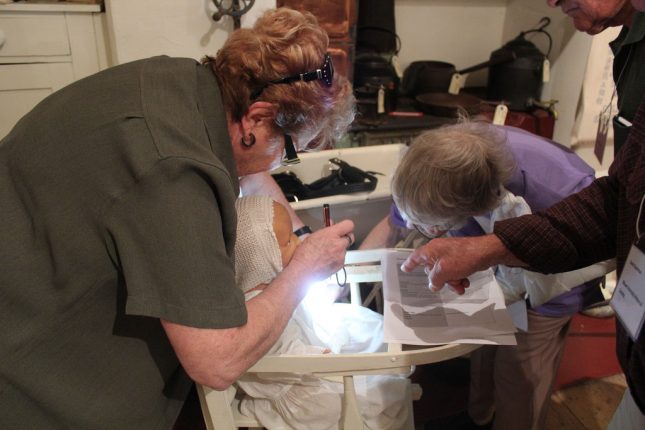
What is at risk from pests?
Organic materials are most at risk from pest infestation – paper, textiles, and objects made of materials such as wood, plant materials and fur.
Some pests are attracted to materials made of cellulose – paper, starch adhesives and sizing – and others to protein-based materials, such as wool, feathers and fur. Some pests eat anything.
While not often directly consumed by most pests, inorganic objects (eg stone, metals and ceramics) can be damaged by general dirt and staining caused by pests.
What to look out for – Some signs that you may have a pest problem include:
- Holes, surface grazing or bite marks in objects. Borer holes are usually perfectly round, while moth holes are more irregular. Small piles of fresh dust often accompany borer holes.
- Droppings. (The polite term for insect poo is “frass”).
- Eggs. Insect eggs often look similar to pale poppy seeds.
- Some insects leave webbing from their larval stages.
- Some insects leave cases and cocoons from their larval stages. These can often be difficult to spot as they may be made from the object itself.
- Live insects, dead insects, and cast skins.
- Some pests, such as termites, can be heard chewing.
- Some pests, such as termites and rodents, can leave distinctive odours.
When to look
- Spring
Spring is the most important time to be watchful, as insect populations can increase quite suddenly with the warm weather.
However, regular inspections of vulnerable collections are important, as there can be insect activity at any time of year. - Once a season
It is a good idea to inspect vulnerable collections at least once per season – vulnerable collections include most protein-based materials, such as natural history collections, feathers, furs, silk and wool. Other collections can be checked annually. - Loans, items returning from loan and new acquisitions
It is also advisable to check all collections that are coming into the building before they are placed in storage, whether they are coming back from loan, new acquisitions, or collections from other institutions.
Where to look – Pests are more likely to be found in the following kinds of places:
- Warm areas: Check sunlit areas, windowsills, hot pipes, heaters, electrical equipment such as fridges and circuit boards, roof spaces.
- Dark, undisturbed areas: Look under and behind furniture and objects, inside the seams and pockets of clothing, and in floor, wall and roof cavities. Pests are more likely to move around the perimeters of spaces than across open floors.
- Damp or wet spaces: Look for leaking pipes or waterlogged material, or in humid areas such as bathrooms and plant rooms. Condensation on windows and pipes can also create humid pockets of air.
- Messy spaces: Pests will be attracted to garbage and debris, particularly if it contains food scraps. Check piles of paper, wood and other waste material. Pests are also attracted to dust and dirt, and to other dead insects – check your light fixtures and windowsills. Kitchens, bathrooms, loading bays and workrooms can all contain attractive rubbish for pests.
- Plants and Animals: Check any plants, flowers and firewood that may be used inside the museum. Look at the plants surrounding the building – do they grow close to the walls? Pests may use these planted areas to gain easy access to the building. Check eaves and gutters for plant and water build-up, and to remove animal nests.
- New collections: New material coming into the building is a potential source of infestations. Check all new acquisitions and incoming loans carefully before placing them on display or in storage. Boxes and packing material can also harbour insects.
